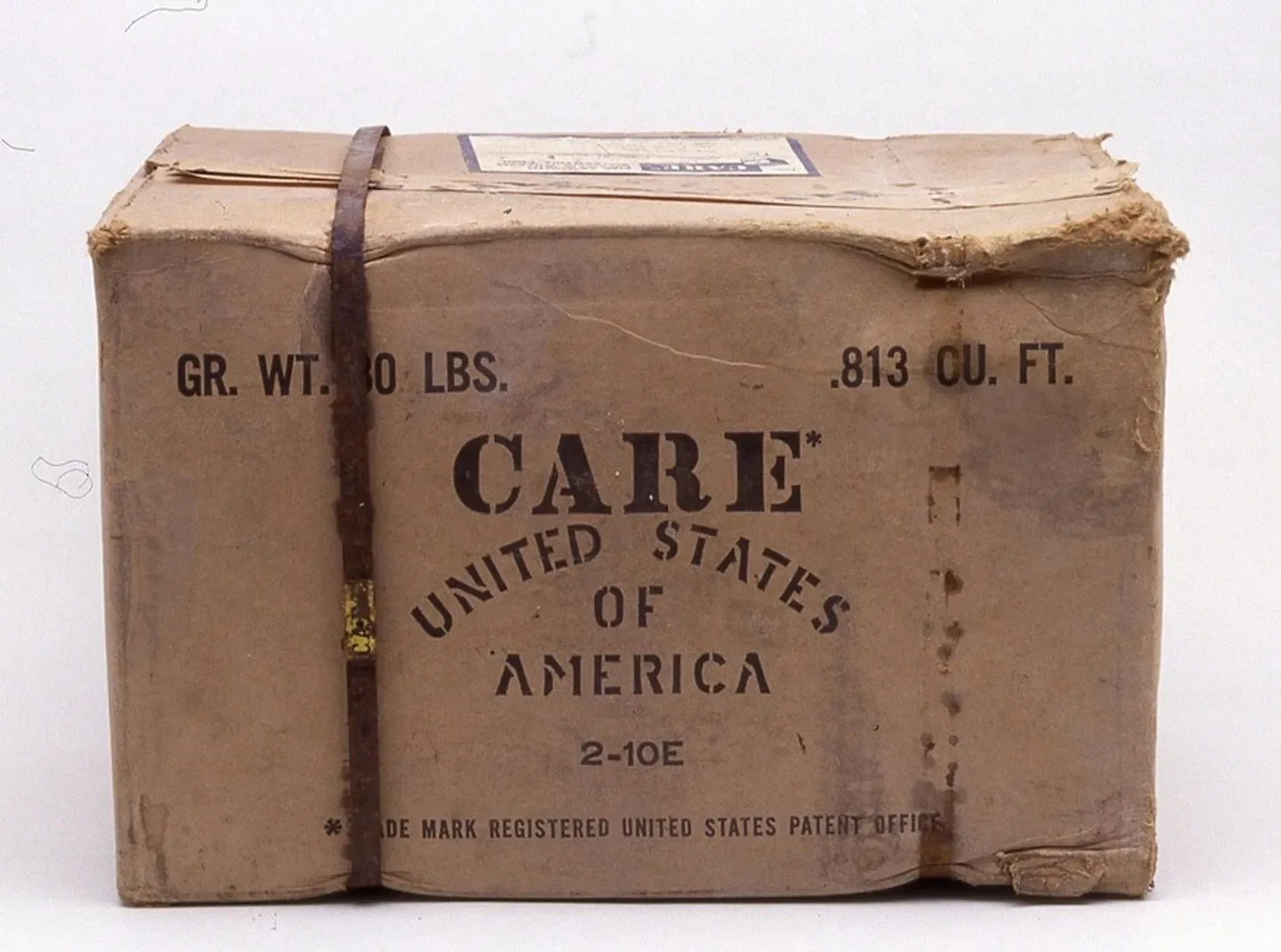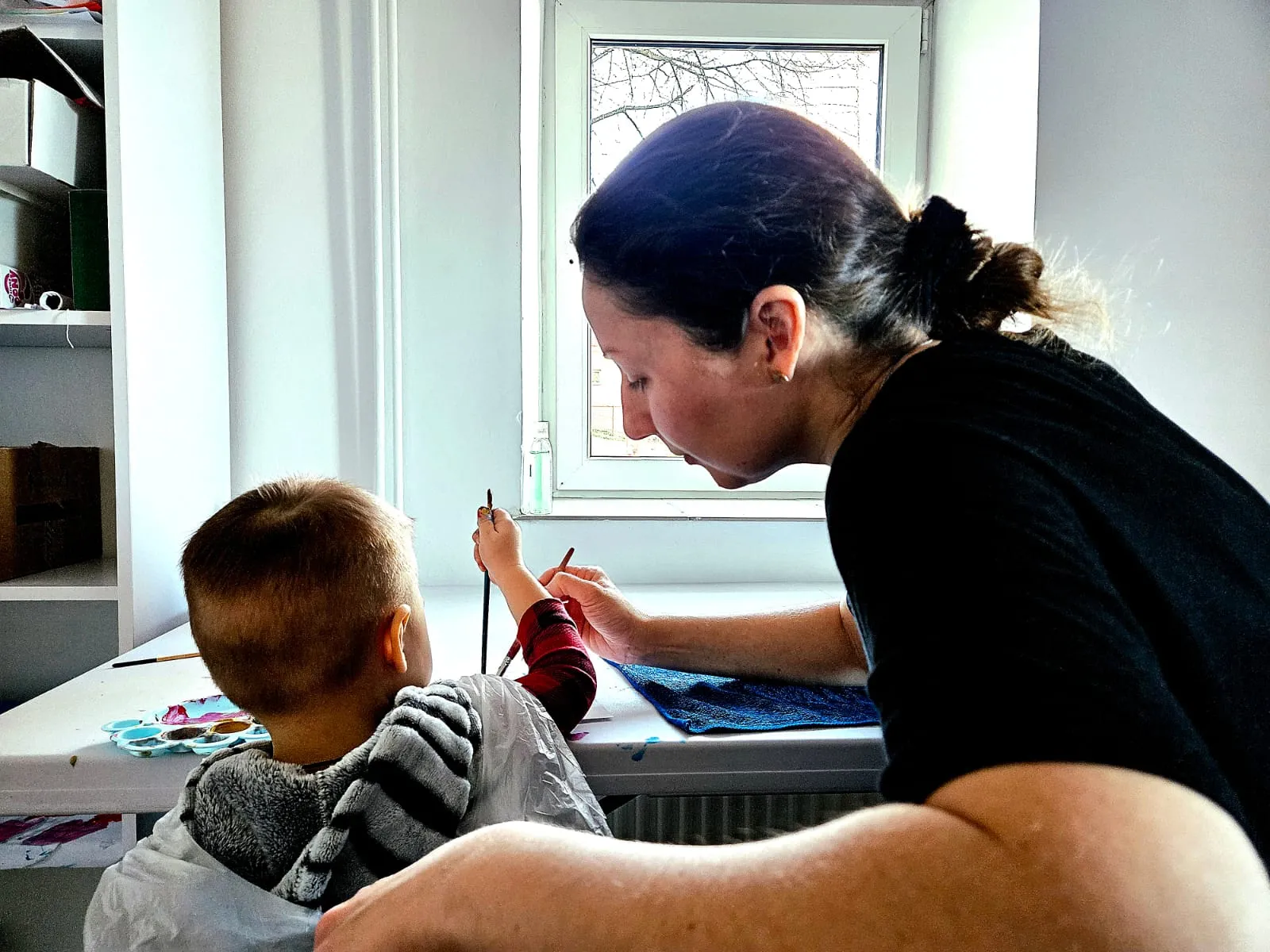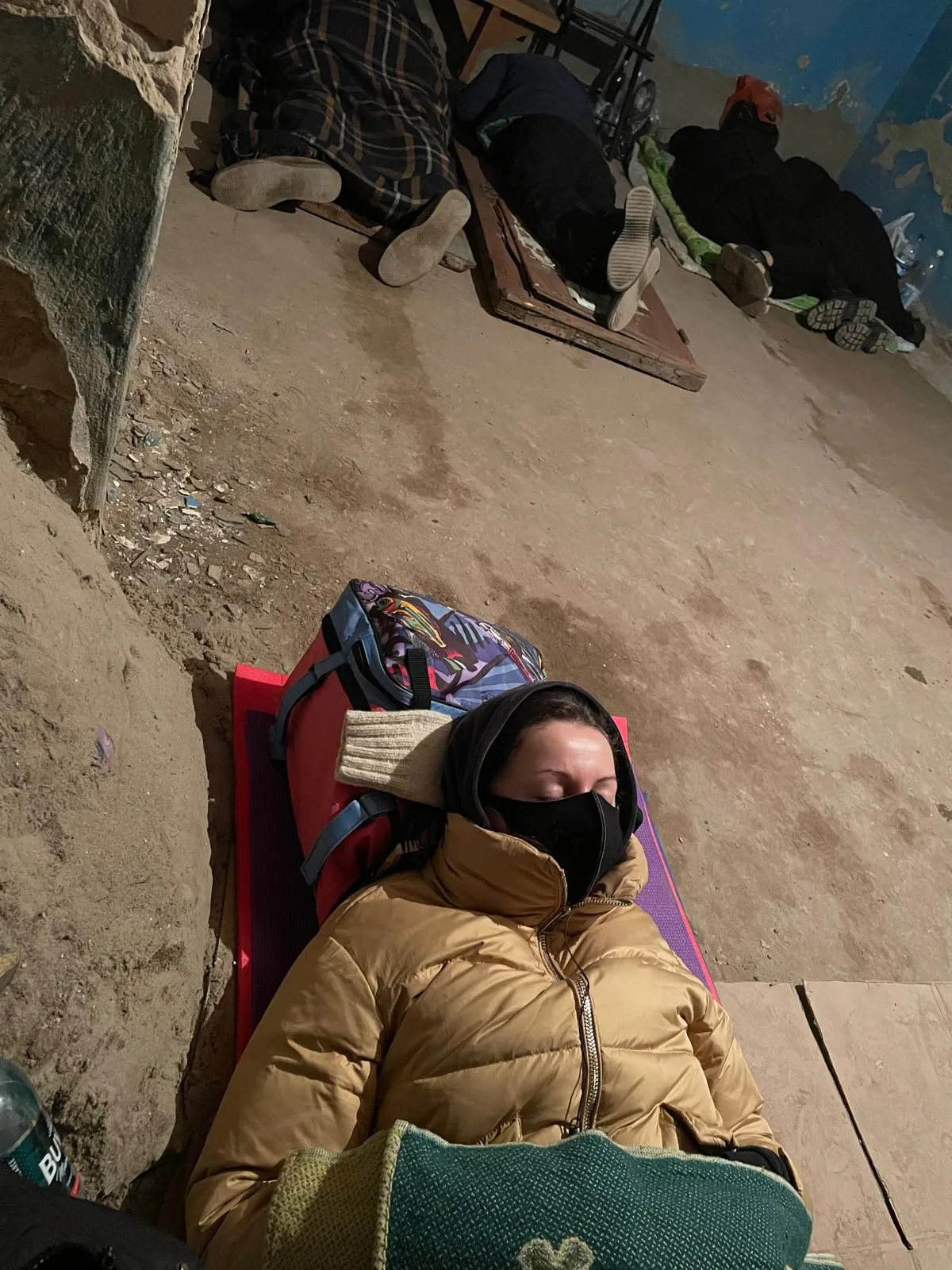Luba lived most of her life near the border with Russia and Belarus. The first bombs hit her in Chernihiv. She became active in grassroots relief—running a makeshift shelter in a basement with her sister, while her boyfriend rode his bicycle to deliver medicine.
“We were able to cook dinner for 40 people with just water and potatoes,” she recalls.
Bombs struck nearby — on a children’s hospital, a theater, and a hotel, —sometimes just a few hundred yards from her shelter.
In April 2022, she moved to her family’s house in the countryside. Even though it was quieter, she found it hard to shake survival habits. At first, she still slept in her clothes, ready to leave at a moment’s notice. Soon after, her mother passed away, and she gave birth to Romchik.
By the fall of 2024, drones began flying over her windows. At first, they were headed toward Kyiv and Zhytomyr. Then they came closer.
“The noise was so loud that I thought they were going to explode on the next street,” she remembers. For three days, she and Romchik hid under the stove in the kitchen, watching cartoons to drown out the sounds of war.
A new life in Poland
On the third day of constant drone shelling, she decided to leave. With the help of her family, she reached Kyiv and boarded the train. The Association of Ukrainians responded to her on Instagram, promising to assist her as soon as she arrived in Przemysl.
“I thought I would go with them or to a hostel, but hostels are expensive,” she recalls.
“I got there, and they gave me a bed, then a psychologist came. They gave me food, offered me a doctor, I had time to wash and rest. In one day, I was able to get a social security number, apply for benefits, open a bank account, get a SIM card. I also received cash assistance. I received a lot of care and help. I go to church every Sunday, and, in my prayers, I always mention Mr. Mykhailo from the Association who took care of me,” she adds.
She was placed in a shelter on Basztowa Street. Later, she moved to the next shelter on Szykowskiego Street (both run by the Association; the shelter on Szykowskiego Street was bought and partially renovated with CARE funding), where they have their own room, a garden, and a playground. Romchik especially loves the slide.
In September, he will probably start kindergarten in Poland. By then, the family hope to move from the shelter into a rented apartment.
And they still watch cartoons together. This time, with Polish dubbing—so Romchik can learn a new language. And they don’t have to hide behind the stove or turn up the volume to silence the drones.



